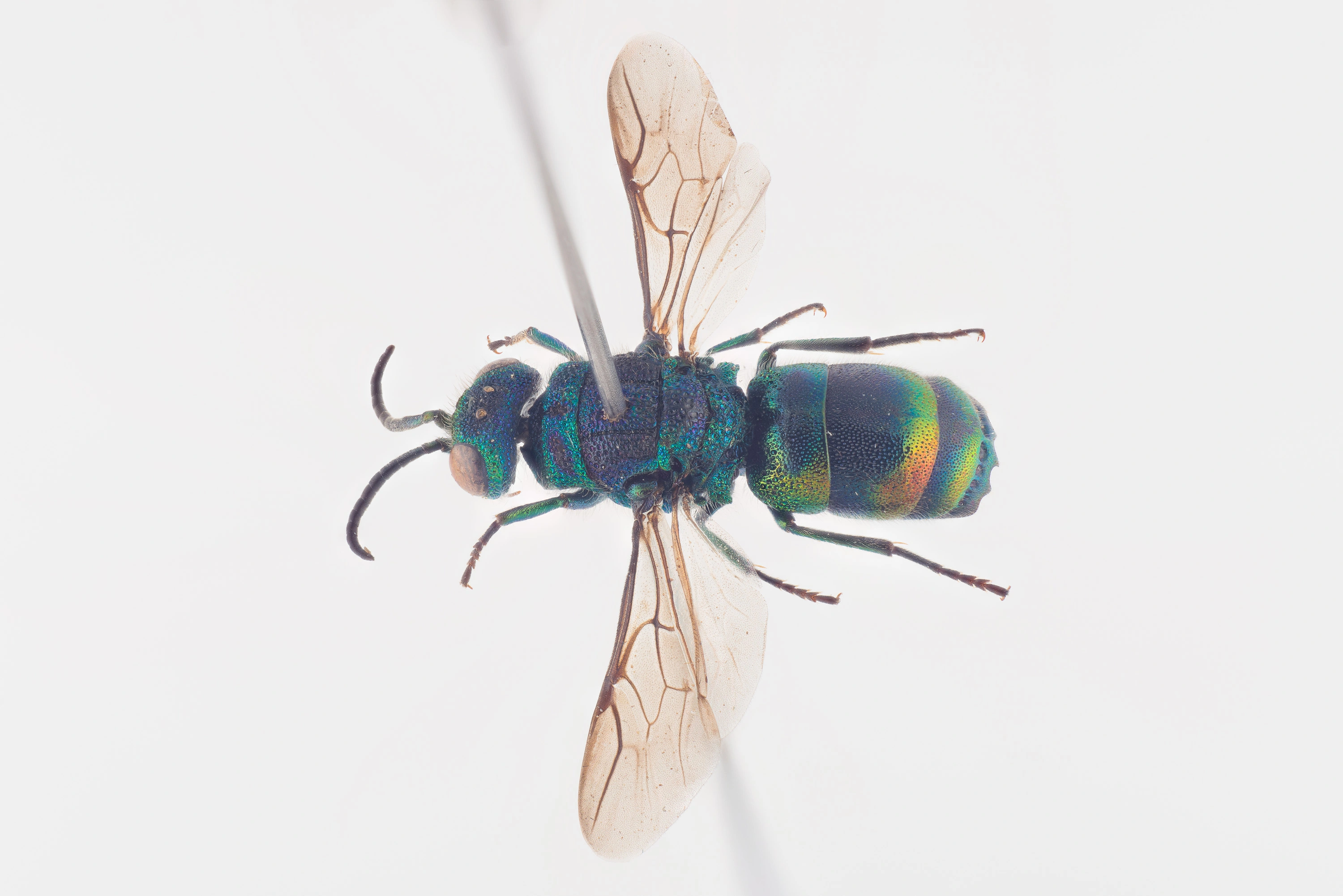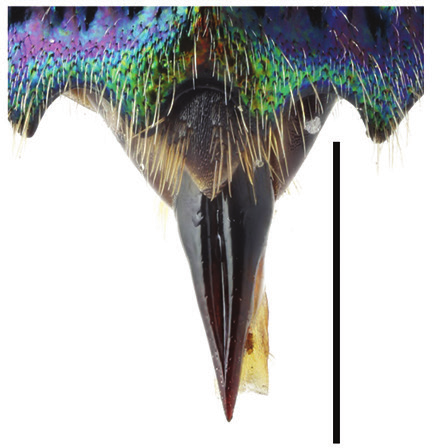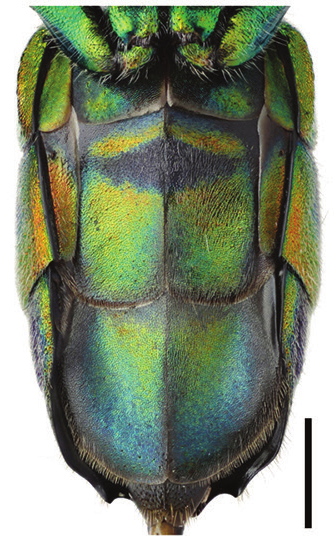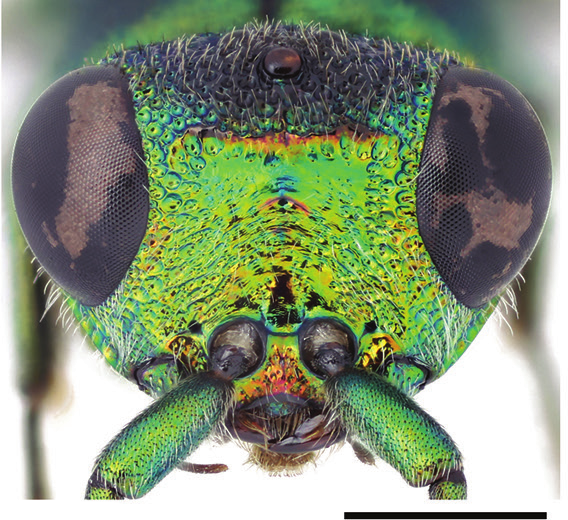Chrysis equestris
A rare species mostly found in old forest margins with sun-exposed dead wood. The hosts are Eumeninae in the genus Discoelius. The species has a very characteristic colour patterns as well as six apical teeth on T3. Chrysis equestris can only be confused with C. zetterstedti.
- Innhold
- Diagnosis
- Distribution
- Biology
Diagnosis
Figure 80
T3, dorsal view: C. equestris. Scale 1 mm.
Figure 89
Ovipositor, dorsal view: C. equestris ♀. Scale 1 mm.
Figure 112
Metasoma, ventral view: C. equestris ♀. Scale 1 mm.
Figure 134
Genital capsule, dorsal view: C. equestris ♂. Scale 0.5 mm.
Figure 151
Head, frontal view (arrow indicating frontal carina): C. equestris ♀. Scale 1 mm.
Length 7–10 mm.
Both sexes have a mostly dark blue or black, partially violet, body with green reflections on the frons, margins of the pronotum, mesoscutum, mesoscutellum and mesopleuron. The tergites have contrasting golden red or golden green bands posteriorly (except on the apical rim), which are especially wide laterally on T1 and T2. The colour and form of the bands is quite variable, usually they are wider and more reddish in the female than in the male. The species closely resembles C. zetterstedti, but is characterised by the following differences: the black spots of S2 are narrower, usually not extending to the lateral margins of the sternite (Fig. 112), T5 of the female (on ovipositor) is broader and has a longitudinal medial groove (Fig. 89), the head is broader, especially in female (shortest distance between the compound eyes is slightly longer than the diameter of an eye) (Fig. 151), the gonostyle is shorter, the cuspis is apically curved (not straight) (Fig. 134), and the propodeal tooth is slightly convex or straight ventrally (not lobate).
Distribution
Estonia, Finland, Lithuania, Norway, Sweden. Rare.
Trans-Palearctic: from western Europe to Russian Far East (Sakhalin).
Be aware that the records present in the GBIF map may be misleading for some countries due to unrevised data sets or missing information.
GBIF Taxon: Chrysis equestris Dahlbom, 1854Biology
Habitat: forest margins, clearings and gardens with sun-exposed dead wood. Adults are usually found on sun-exposed dead tree trunks and stumps, most often of Populus, but also of Salix, Betula and Alnus, rarely Picea and Pinus. They also fly near log piles, telephone poles and walls of old wooden buildings (Frey 1915, Linsenmaier 1997).
Flight period: mid-May to early August.
Host: Discoelius dufourii Lepeletier and D. zonalis (Panzer) (Vespidae) (Pärn et al. 2014, our own obs.).





